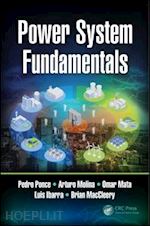Pedro Ponce studied engineering in automation and control and graduated in 1995. Subsequently, he completed his graduate studies, obtaining the degree of Master of Science in 1998 and Doctor of Science in 2002. He worked as a field and design engineer in several industries. He specializes in the areas of industrial automation systems, electrical machines, electric drives, power electronics, conventional and digital control, expert systems, neural networks fuzzy logic, biological artificial systems, and evolutionary systems. He is a professor and a researcher at Tecnologico de Monterrey campus Ciudad de Mexico. Arturo Molina is a professor and researcher, as well as Vice President of Research, Postgraduate Studies and Continuing Education, at the Tecnologico de Monterrey. He has a bachelor’s degree in computational systems and a master’s degree in computational sciences (1990) from the Tecnologico de Monterrey, Campus Monterrey (1986), a doctorate degree in mechanics from the Technical University of Budapest (1992), and another in manufacturing systems from the Loughborough University of Technology in England (1995). Omar Mata holds a BS degree in telecommunications and electronic systems (2010) from Tecnologico de Monterrey and the degree of Master of Science (2013) from the same institution. Since 2015, he has been the CEO and co-founder of Uberproto Technologies, which is a company specializing in the development of software and electronic technologies. He has been a research assistant and professor at the Tecnologico de Monterrey campus Ciudad de Mexico since 2011. He specializes in the areas of robotics and digital systems with interest in fuzzy logic control. Luis M. Ibarra received the BS degree in mechatronics engineering from Tecnologico de Monterrey, Mexico City, Mexico, in 2011 and the PhD degree in intelligent control from the same institution in 2016. He is currently working as a researcher for a project headed by the Mexican Energy Secretariat (SENER) and the Mexican Science and Technology Council (CONACYT) with special focus on power electronics control. From 2012 to 2015, he was a research assistant and lecturer with the Tecnologico de Monterrey, Mexico City, Mexico. His research interests include robust and intelligent control techniques, power electronics, and renewable energies. Most of his work is centered in fuzzy logic control, robust control, and electric machinery. Brian MacCleery helps small to medium businesses bring innovative clean energy products to market. He guides National Instruments strategic R&D and product development for embedded control and measurement with a focus on customer oriented design tools for advanced control. In his 15-year tenure at NI, MacCleery led market research, product definition, launch and growth of the successful NI CompactRIO platform and product strategy for the popular LabVIEW FPGA toolchain. MacCleery holds bachelor and master degrees in electrical and computer engineering from Virginia Tech where he now serves on the Industry Advisory Board. He completed his graduate research in power electronics and linear switched reluctance motor drives under the direction of Dr. Krishnan Ramu and led multidisciplinary teams in the development of novel magnetic levitation and propulsion vehicle systems.











